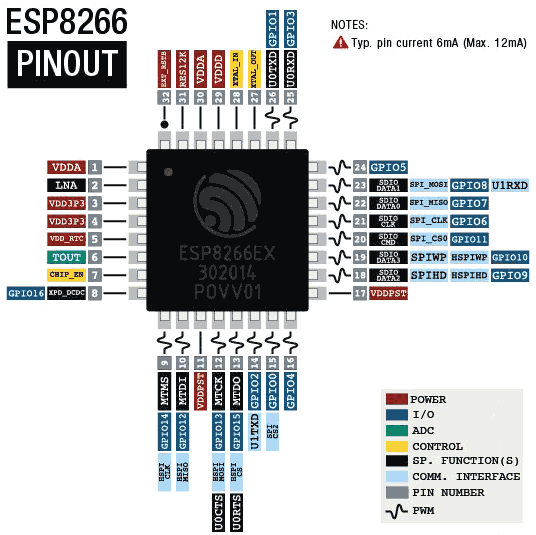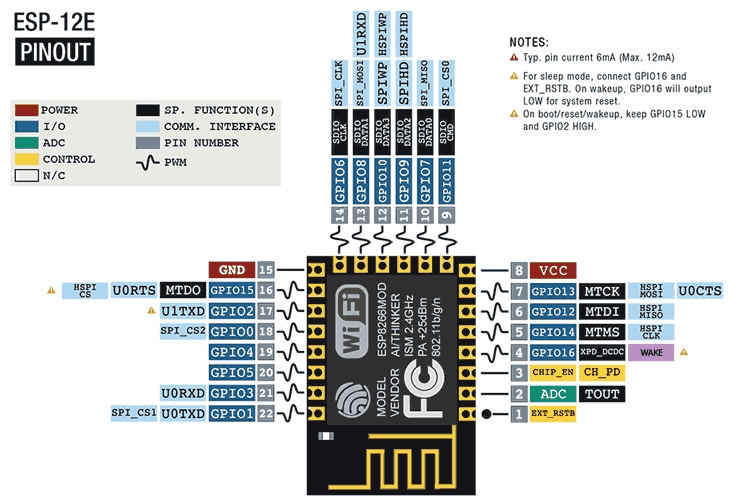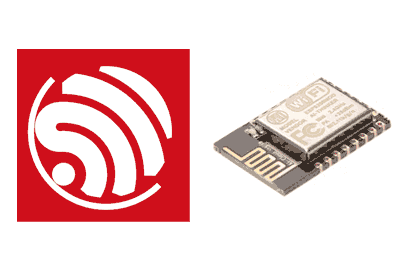Let’s continue delving into the SoC ESP8266 from the manufacturer Espressif. In this entry, we will look at the pinout diagram of the ESP8266 and the ESP12E.
One of the first difficulties when using development boards based on the ESP8266 is obtaining its pinout diagram. Even more so because manufacturers do not maintain a consistent criterion when assigning the pins of their board to those of the ESP8266. This can lead to more than one headache.
That’s why it’s important to take some time to understand the pins and hardware of the ESP8266. Because, although the names may change on development boards, they will always share the characteristics of the ESP826, so just knowing the equivalence between the pins will allow us to use any development board.
On the other hand, the ESP12E is the module with SoC ESP8266 most commonly used in development boards. Understanding its pinout is closely related to understanding the ESP8266, disregarding pins that do not contribute much (internal).
Finally, understanding the pinout and hardware of the ESP8266 and the ESP12E will allow us to use them independently, without a development board. Although we will have to include our own electronics (resistors, dividers, voltage regulators).
So let’s begin to delve into the hardware of the ESP8266 and the ESP12E module, looking at their pinout diagram, and then we will see some details of their hardware.
Pinout of the ESP8266
Here we have the pinout diagram of the ESP8266.

The ESP8266 has 32 available pins, of which 17 are GPIO, 1 is an ADC, and the rest are essentially related to the power supply and control of the ESP8266.
Pinout of the ESP12E
On the other hand, here we have the pinout diagram of the ESP12E.

As we can see, the ESP12E has 22 pins. It retains the 17 GPIO pins, the ADC pin, but reduces the power supply pins to 2 (Vcc and GND) and the control pins to CHIP_EN (to turn the ESP12E on and off) and EXT_RSTB (to reset).
That is to say, in the ESP12E we have available most of the “important” pins of the SoC, while the module takes care of electrically connecting most of the power and control pins. This is one of the reasons for the success and high implementation of the ESP12E, as it offers us all the functions of the ESP8266. Other modules, such as the ESP01 or even the ESP12S, forego some GPIO to have a smaller number of pins or a smaller size.
In the next entry of the series on ESP8266 and ESP32, we will go into detail about the hardware of the ESP8266 and see the main differences with the usual Arduino models that integrate the ESP8266, and we will start its programming.
